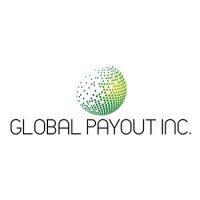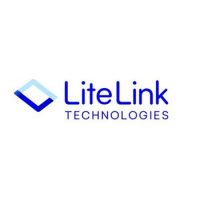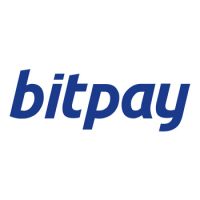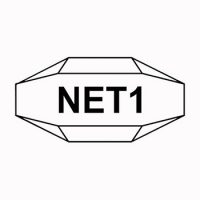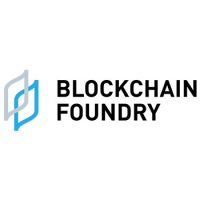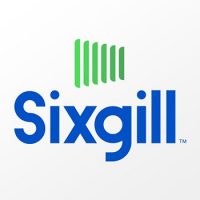Blockchain
Creatd, Inc. Reports Record Financial Results for Third Quarter 2021
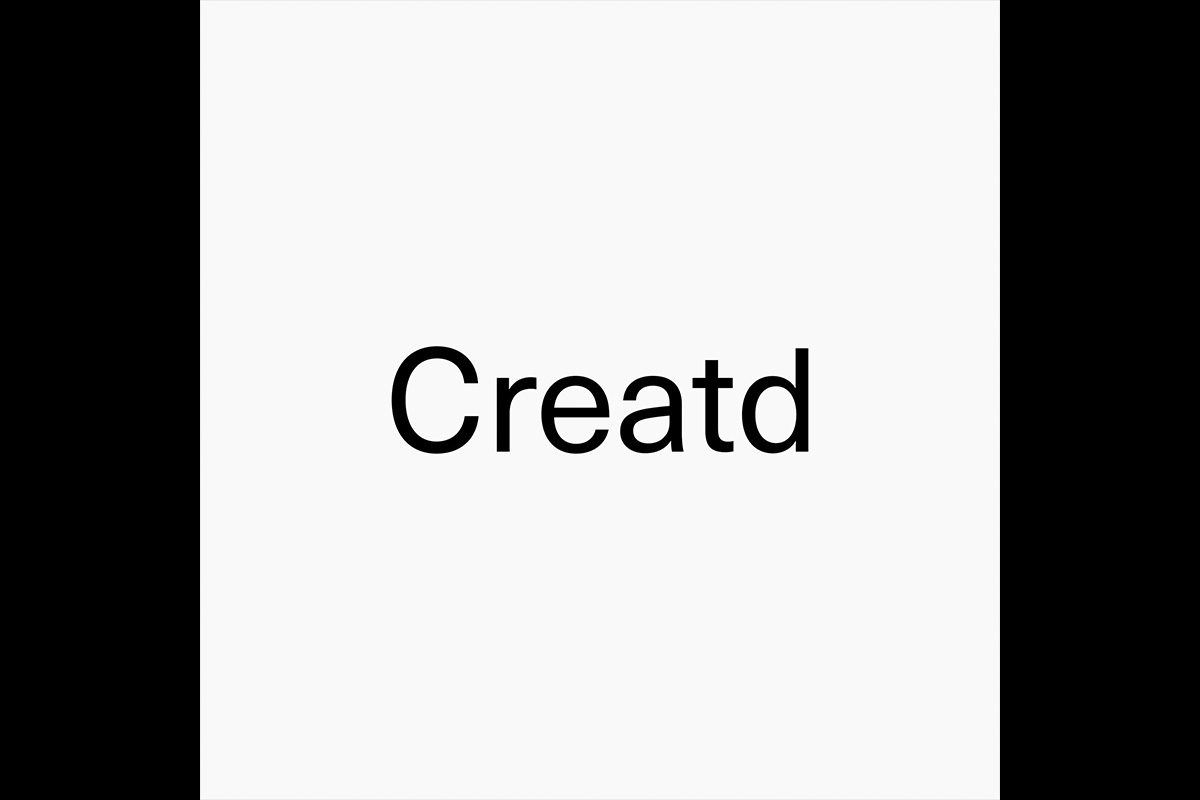
Creatd, Inc. (Nasdaq CM: CRTD) (“Creatd” or the “Company”), a creator-first holding company and the parent company of Vocal, yesterday reported financial results for its three- and nine-month periods ended September 30, 2021. With these record results, which saw third quarter 2021 revenues similar to the amount of revenue for the entirety of fiscal year 2020, the Company reaffirms its fiscal year 2021 revenue guidance of between $4.5 and $4.7 million. Looking ahead, the Company initiates revenue guidance of $10 to $15 million for full year 2022.
Creatd founder and co-CEO Jeremy Frommer commented, “As a founder and entrepreneur, it is gratifying to not only achieve proof of concept and commercialization, but to now witness revenue growth acceleration and an expansion of Creatd’s core business, first launched five years ago. Having completed our Nasdaq uplisting only a little over one year ago—a feat achieved by only a handful of tens of thousands of OTC-quoted companies each year—the achievements our company has made in a relatively short period of time are only more pronounced. Namely, we continue to experience double digit quarterly growth, as we have for five out of our last six quarters, we have completed our second agency acquisition, and we have expanded our footprint with new offices in New York and Miami.”
“I am grateful for this initial hard-won success and humbled to have attracted a stellar team of hardworking professionals and, most importantly, to share leadership with our new co-CEO Laurie Weisberg, whose ability to accelerate growth for technology companies is well-documented.”
Laurie Weisberg, Creatd’s co-CEO, commented, “Our business development efforts are yielding visibility for a strong and growing revenue pipeline, made possible by the emphasis we have placed this quarter on recruiting incredible industry talent. These meticulously-chosen professionals and support teams are crucial to executing on our outlined growth strategies in the scope of product development, brand partnerships, and M&A activity. We look forward to working toward a strong end to the year.”
Third Quarter and Nine Months 2021 Financial Highlights:
Revenue:
- In line with guidance, net revenues for the third quarter were $1.18 million, a nearly three-fold increase as compared to third quarter 2020 revenues of $425,000, and a 22% increase over second quarter 2021 net revenues of $971,000. Gross revenues for third quarter 2021 were $1.21 million, a 20% increase compared to gross revenues for second quarter 2021. The increase in third quarter revenues is largely attributable to continued growth in Creatd Labs’ creator subscriptions, with Vocal creators finding increasing value from the Vocal platform. Additionally, Creatd Partners, the Company’s agency business segment, saw growth this quarter of approximately 14% due in part to the successful acquisition and subsequent integration of the WHE Agency. Going forward, the Company will provide total bookings and other non-GAAP financial data, for WHE as well as its other existing and future business lines, as an indicator of the Company’s revenue growth over time.
- For the nine months ended September 30, 2021, net revenues totaled approximately $2.9 million, an increase of 178% over the prior year’s nine-month period. For the remainder of 2021 and going forward, Creatd Labs is expected to maintain its growth momentum. Creatd Partners anticipates accelerated growth across all of its service lines, including the ramp-up of its talent representation and management function. Finally, given its initial sales data and strong opportunity pipeline, the newly formed Creatd Ventures and Creatd Studios are expected to begin to impact the Company’s revenues materially in the first half of 2022.
Operating Expenses:
- Marketing costs dropped by over 50% between the second and third quarter, from $4.2 million in the second quarter 2021 to $1.8 million in the third quarter. Outside of variable marketing expenses and one-time costs associated with the Company’s financings and other transactions, the Company’s operating expenses this quarter were $3.5 million, in line with previous quarters. Additionally, the Company reported approximately $2.2 million in non-cash charges related to the vesting and issuance of stock options, as well as non-recurring expenses related to financings. In total, operating expenses reported for the third quarter 2021 were $6.7 million.The Company continues to deliver on its stated goal to lessen its dependence on third party marketing vendors. Going forward, the Company anticipates general operating expenses to remain relatively consistent with those of the third quarter. During the three-month period ended September 30, 2021, the Company incurred a loss from operations of $(6.9) million, compared to a loss from operations of $(7.0) million during the same period last year and a loss of $(8.4) million during the second quarter 2021, a 21% reduction in losses.
Given the Company’s current cash position—consisting of nearly $5.2 million in cash, plus a $500,000 prepaid credit with its development partner, Thinkmill—the Company currently has close to $6 million in operating capital. Additionally, the Company can draw down on a vendor balance of up to $3 million with its third-party social media marketing partners. Given the Company’s current revenue guidance and diminishing dependence on these marketing partners, the Company expects to be cash flow breakeven by the end of third quarter 2022. Additionally, the Company anticipates achieving close to breakeven on pre-marketing operational expenses by the end of the second quarter 2022. - Comprehensive Loss: Comprehensive loss for the third quarter 2021 totaled $(9.7) million, or $(0.71) per basic and diluted share, which included several non-recurring, non-cash charges totaling approximately $3.0 million related primarily to the elimination of debt, the majority of which was converted to equity during the quarter, and a change in derivative liability expense of approximately $833,000. This compares to a comprehensive loss of $(16.2) million or $(3.81) per basic and diluted share for third quarter 2020, an 81% improvement per basic and diluted share.
- Total Assets: On September 30, 2021, total assets were $8.3 million, away from the OG Collection, the Company’s wholly owned image library and related transmedia IP and NFT portfolio, currently carried at zero value on the Company’s balance sheet. The company has a plan for monetizing the OG Collection more significantly over fiscal year 2022, including a potential spin out of the media library and its licensing rights. Cash, inventory, accounts receivable, and prepaid expenses totaled $2.6 million, a decrease of $747,000, or 23%, from prior second quarter.
- Total Liabilities: The Company’s total liabilities decreased by approximately $932,000 during the third quarter to $6.1 million as a substantial portion of its debt converted into equity at $5.00 per share.
As of the third quarter 2021, the Company’s debt totaled approximately $3 million, comprised of: $154,000 in convertible debt, approximately $2.2 million in notes payable that included $232,000 of a Government Payroll Protection Program (“PPP”) loan that carries 1% annual interest (which the Company has been paying down steadily from its original principal amount of $282,000); $660,000 related to the acquisition of Seller’s Choice, a liability that is currently in litigation; and $1.1 million in related party debt, of which $190,000 has been repaid subsequent to third quarter and the remainder has been settled for $350,000, also subsequent to quarter-end.
- Subsequent Liability Reductions: Subsequent to third quarter, $640,000 in convertible notes were converted into equity at $5.00 per share in October 2021.
- Shareholders’ Equity: As of September 30, 2021, shareholders’ equity totaled approximately $2.1 million, an increase of $2.6 million compared to June 30, 2021.
- Subsequent Financial Developments:
- Registered Direct Offering of Common Shares: On October 27, 2021, Creatd completed a Registered Direct Offering of 850,000 shares of its common stock at $4.50 per share–a 30% improvement compared to the pricing of its previous financing at $3.45–generating net proceeds of $3.4 million. This is the Company’s second offering pursuant to a “shelf” registration statement on Form S-3 (File No. 333-250982) that went effective on April 23, 2021, granting the Company the ability to raise up to $50 million in aggregate proceeds over time. To date, the Company has raised approximately $6.4 million from the sale of 1.6 million shares from this shelf registration.
- Capitalization: As of September 30, 2021, Creatd had approximately 14 million shares of common stock outstanding, an increase of approximately 2.2 million shares from the prior second quarter. This increase is due to the exercise of 955,000 warrants at $4.50 per share; the conversion of notes into 780,000 shares; preferred stock conversions into 102,000 shares of common stock; the issuance of 213,000 shares attributed to the closing of the WHE acquisition; the partial exercise of the bankers’ overallotment from the June 21, 2021 financing of 87,500 shares; quarterly Board compensation shares of 17,000; and 5,800 shares allocated to consultant services in lieu of cash.
Creatd’s fully diluted shares total approximately 23 million, including 2.3 million stock options, 148,000 shares underlying Series E Preferred stock, and 6.6 million warrants, approximately 5 million of which have an exercise price of $4.50.
Frommer continued, “Creatd is entering an accelerated revenue phase with a healthy balance sheet. With our current revenue projections, we will approach cash flow breakeven in the third quarter of 2022.”
Third Quarter 2021 Operational Highlights
- Creatd ‘Four Pillar’ Organizational Structure: During the third quarter of 2021, Creatd unveiled the four pillars of the Company, each with a dedicated revenue stream. While each pillar corresponds to a unique revenue stream and associated segmented expenses, at a management level Creatd employs a shared services model, with each business function, including technology development, marketing, and legal, operating across all of its pillars.
- Creatd Labs houses the Company’s proprietary technology and development initiatives, including its flagship platform, Vocal, as well as oversees the Company’s content creation framework and the management of its digital communities. Creatd Labs develops and maintains the ecommerce platforms for its partner pillar Creatd Ventures, including the integration of acquired SaaS technology. The pillar additionally oversees the development of NFT-related technology for its partner pillar, Creatd Studios. Creatd Labs derives revenues primarily from Vocal creator subscriptions and platform processing fees.
- Creatd Partners fosters relationships between brands and creators through its suite of agency services, including content marketing (Vocal for Brands), performance marketing or managed services (Seller’s Choice), and influencer marketing (WHE Agency). Revenue is generated through service fees and agency commissions which have consistently grown in each of the last four quarters. Creatd Partners’ 2021 revenues are expected to account for approximately half of the Company’s total revenues. All three agencies leverage brand relationships, influencer opportunities, and technology development from the resources of Creatd Labs and the direct-to-consumer (DTC) companies of Creatd Ventures. In addition, the Creatd Partners pillar leverages the distribution of intellectual property and content developed by partner pillar, Creatd Studios.
- Creatd Ventures builds, develops, and scales e-commerce brands. This segment generates revenues through product sales of its two majority-owned direct-to-consumer brands, Camp and Dune Glow Remedy. The Company’s acquisition strategy for this pillar emphasizes direct-to-consumer brands that are founder-owned, high-growth, low-overhead, and closely aligned with the Company’s core creator-first principles. Creatd Ventures is expected to begin contributing materially to the Company’s revenues in the fourth quarter of 2021.
- Creatd Studios houses transmedia production and adaptation initiatives, including those which leverage the OG Collection and its other IP assets. Creatd Studios will generate revenues through profit-share agreements, licensing fees, book publishing deals, film, TV, podcasts, and NFT marketplace ventures. All of the above opportunities rely upon the resources of the three previous pillars and the creative communities they serve. Creatd Studios is expected to begin contributing materially to the Company’s revenues in the second quarter of 2022.
- Leadership Announcements:
- Laurie Weisberg, previously Creatd’s COO, was appointed the Company’s co-CEO. In this role, Ms. Weisberg primarily oversees the scope of operations, cash flow, human resources, marketing, and brand partnerships while Mr. Frommer focuses on spearheading corporate strategy, technology development, M&A initiatives, and broader financing activities.
- Justin Maury, co-founder and President of Creatd, was appointed COO. Mr. Maury has led Creatd’s product development since inception, and is credited with developing the vision, design, and architecture for Creatd’s flagship product, Vocal. As COO, Mr. Maury continues to manage the oversight of technology development and supervise its continued evolution.
- Senior Management Hires:
- Tom Punch, co-founder of Creatd Ventures’ Dune Glow Remedy, joined the Company as the CEO of Creatd Ventures, overseeing the operations and expansion of Dune and Camp, as well as that of each brand within Creatd Ventures’ growing portfolio.
- Tracy Willis, co-founder of the WHE Agency, joined Creatd as CEO of Creatd Partners’ WHE Agency. In this role, Ms. Willis continues to oversee WHE’s strategic growth, expanding its influencer roster, and directing all talent and brand opportunities.
- Erica Wagner, celebrated author and literary editor, joins Creatd as Lead Editorial Innovator, focusing in particular on Creatd Studios projects. Ms. Wagner was literary editor of The Times for 17 years and is now a contributing writer for the New Statesman and consulting literary editor for Harper’s Bazaar. At Creatd, Ms. Wagner’s responsibilities focus on leveraging Creatd’s extensive intellectual property for future transmedia publishing projects, as well as systematizing Creatd Studios’ production capabilities by sourcing and identifying stories from across Creatd that are well suited for adaptations in the entertainment and publishing industries. Ms. Wagner is expected to join Creatd full-time in early 2022.
- Segment specialists Rich Vinchesi of Olympic Advisers and Andrew Herwitz, President of the Film Sales Company, round out additional key roles, acting as advisors for the Company’s M&A and IP development initiatives, respectively.
- Creatd Labs Platform Development:
- Vocal released five substantial features and tools as part of an 18-month development roadmap of features specifically designed to foster a more personalized experience between creators and their audiences. Most importantly, Vocal’s feature additions work to continue to increase the value proposition for the creator community and economy. Features added thus far include:
- Subscribe, which provides creators the means to build and engage an individualized community around their creations.
- Stories You Liked, giving creators a new way to view a chronological feed of the stories they have liked, all in one place.
- Quick Edit, one of Vocal’s most highly requested features, provides creators with the ability to edit their stories after publication.
- Report button, designed to further promote Vocal’s user safety via community moderation.
- Creator Bonuses, enabling the Vocal team to add money directly to a creator’s existing Wallet balance, thus enhancing on-platform earning power.
- Vocal released five substantial features and tools as part of an 18-month development roadmap of features specifically designed to foster a more personalized experience between creators and their audiences. Most importantly, Vocal’s feature additions work to continue to increase the value proposition for the creator community and economy. Features added thus far include:
- Vocal+ Fiction Awards Challenge: Creatd Studios, the Company’s pillar focused on transmedia productions, announced that it will publish a book featuring the winners of the Vocal+ Fiction Awards Challenge. Announced in October 2021, the Fiction Awards Challenge is Vocal’s largest challenge to date, featuring a $125,000 cash prize pool, with $5,000 awarded to 25 grand prize winners. The published book, which will be a compilation of the winning fiction submissions, is expected to be completed in spring 2022, and will mark the first significant cross-collaboration between Creatd Labs and Creatd Studios.
- Acquisitions: The Company’s acquisition strategy is to acquire controlling interests in growth businesses utilizing a combination of stock and cash, with an emphasis on companies that can leverage and collaborate with all four of Creatd’s pillars.
Creatd Partners Agency Business Acquisitions:
- Acquisition of Influencer Talent Management Agency, WHE: WHE Agency (“WHE”), acquired on July 20, 2021, is a talent management and public relations agency focused on representing and managing influencers and creators. WHE’s pool of creator talent is made up of ideal candidates to join Vocal and increase its value proposition for brand collaborations. Additionally, through joining Creatd, WHE’s talent gained access to all four of its pillars, as well as the capital and resources to leverage their personal brands for new opportunities, particularly in conjunction with the Creatd Studios pillar. At the time of the acquisition, WHE had over 50 digital influencers reaching a combined audience of over 50 million followers with notable brand relationships. Since acquisition, WHE has since signed nearly a dozen top influencers and now reaches an audience of over 68 million followers and collaborates with Subway, Hulu, Prudential, Panera, Target, Disney, Proctor and Gamble, Audible, HelloFresh, Gerber, and more. WHE brand partnerships are expected to generate synergies between the Vocal platform and its agency-related services, significantly broadening the Company’s reach with Fortune 500 companies.
Creatd Ventures DTC / e-Commerce Acquisitions:
- Creatd Completes Majority Purchase of Dune Glow Remedy (“Dune”): Dune, acquired on October 3, 2021, is a direct-to-consumer beauty brand focused on health and wellness beverages. Over the course of Q3 2021, the Creatd Labs team implemented a sophisticated ecommerce framework for Dune and provides ongoing development and maintenance. Today, Dune Glow Remedy is part of Creatd Ventures and its growing portfolio of DTC companies, utilizing the Company’s four pillars, including the influencers of the WHE Agency.
- Camp Announces Redesign and New Product Launches: Camp, formerly Plant Camp, acquired during Q2 2021, leverages the same technology framework utilized by Dune. In early Q4 2021, the Company announced the redesign of its website as well as the launch of its new products under its new name, Camp. While still a healthy, kid-friendly food company that launched its first product, a nutrient-rich mac and cheese just over a year ago, it has been notably observed that Camp’s market is significantly broader with strong interest from adults. Going forward, marketing and product development will expand beyond kids to focus on iterations of comfort foods for the health-conscious consumer. With the new website and product launch, Camp increased its offerings with two new products, a healthy veggie-based vegan cheesy mac and a twist veggie pasta. Camp intends to continue to innovate new product offerings, as well as pursue expansion of its distribution beyond direct-to-consumer e-commerce to eventual placement at big box retailers.
- Crypto Strategy: “OG Gallery,” Creatd’s new NFT art platform, focuses on the tokenization, marketing, and sale of digital collectibles originating from the OG Collection, a library of over 150,000 original photographs, digital artwork, imagery, original documents, illustrations, videos, and collectables by the legendary Bob Guccione, former CEO of General Media and owner of publications including Penthouse, Viva, OMNI and Longevity.
During Q3, Creatd issued its first NFT art offering. Eight days later, on October 1, 2021, all 6 pieces each sold for $1,000 a piece (0.34wETH).
Additionally, Creatd announced a strategic partnership with NetObjex to explore development of a proprietary NFT marketplace applying blockchain to facilitate the marketing, trading and sales process for a broader creator network.
Subsequent to Q3: Creatd issued its second NFT release – The Trump Photographs. In the future, the OG Gallery is expected to release further NFT art of Penthouse Pets, celebrities, and illustrations from the iconic collection. For updates on upcoming NFT releases, please follow Creatd’s social media accounts and subscribe to its newsletter.
Blockchain
Blocks & Headlines: Today in Blockchain – May 16, 2025

A Pivotal Moment for Blockchain’s Many Frontiers
Today’s briefing arrives at a crossroads in blockchain’s evolution. From AI-driven Layer-1 grant programs to gamified resets in Web3, from supply-chain trust revolutions to exchange-driven token incentives, and high-stakes regulatory leadership shifts, the industry is charting new territory on multiple fronts. As builders, investors, and policymakers navigate this shifting terrain, five stories stand out for their potential to reshape blockchain’s trajectory:
-
Lightchain Protocol AI unveils a $150,000 developer grant program to onboard top builders in AI × blockchain.
-
Blockchain gaming experiences its lowest engagement of 2025, signaling a sector reset toward sustainability.
-
Norwegian Seafood Council research highlights blockchain’s trust-building power in global supply chains.
-
MEXC Exchange announces the Einstein (EIN) listing on July 20, 2025, buoyed by a $50 million rewards event.
-
Summer Mersinger, a US CFTC commissioner, is tapped as CEO of the Blockchain Association, marking a pivotal regulatory turn.
In this op-ed–style briefing, we’ll unpack each development, explore its implications for blockchain, cryptocurrency, Web3, DeFi, and NFTs, and assess how these narratives intersect to define today’s momentum.
1. Lightchain Protocol AI’s $150K Grant: Catalyzing Decentralized Intelligence
What happened: On May 15, 2025, Lightchain Protocol AI—a Layer-1 blockchain optimized for AI workloads—launched its Developer Grant & Ecosystem Incentive Program, pledging up to $150,000 in total funding to on-board teams building dApps, explorers, wallets, analytics dashboards, DeFi protocols, NFT platforms, and AI-powered modules on its network. Grants are milestone-based (up to $5,000 per milestone), accompanied by technical support, co-marketing, and ecosystem visibility. Source: Bitcoin News
Why it matters: Lightchain’s move underscores the growing fusion of AI and blockchain. By allocating resources to builders at the intersection of these technologies, the protocol signals that the next wave of innovation will hinge on intelligent smart contracts, federated learning coordination, and on-chain decision-making. For developers, this grant lowers barriers to entry and emphasizes sustainable, value-driven growth over token speculation.
> “We’re seeking impactful projects that align with Lightchain AI’s goal of bridging AI and blockchain—everything from AI prediction markets to compute marketplaces.” > — Lightchain Protocol AI Core Team
Implications:
-
DeFi & NFTs: Expect AI-augmented lending protocols and NFT platforms with dynamic metadata driven by on-chain models.
-
Ecosystem Growth: Lightchain’s aggressive grant strategy may spur competitors (e.g., Ethereum layer-2s) to bolster their own builder incentives.
-
Governance & Sustainability: The milestone-based approach aligns funding with tangible progress, a model DeFi DAOs may increasingly adopt for resource allocation.
Source: Bitcoin News
2. Blockchain Gaming’s 2025 Low: A “Reset” Toward Quality
What happened: According to Crypto.news, blockchain gaming saw daily active wallets dip to 4.8 million in April 2025—a 10% month-over-month decline and the lowest point of the year for Web3 gaming. Share of the DApp ecosystem for gaming fell to 21%, now tied with DeFi, while AI projects surged to 16% of on-chain activity. Funding also plunged nearly 70% from March to $21 million in April, though Arbitrum Gaming Ventures deployed $10 million from its $200 million fund to support titles like Wildcard, XAI Network, and Proof of Play. Source: Crypto.news
> “Capital is harder to secure, but that’s not necessarily bad. Weak projects are falling away, and funds are flowing into builders laying the groundwork for the next generation of blockchain games.” > — Sara Gherghelas, DappRadar Analyst
Why it matters: The downturn reflects a market recalibration from token-centric models toward user engagement, game mechanics, and interoperability—key for mainstream adoption. High-profile missteps (e.g., Square Enix shelving Symbiogenesis, Sega’s experimental launch of KAI: Battle of Three Kingdoms) contrast with enduring partnerships like Ubisoft + Immutable’s Might & Magic card game.
Implications:
-
DeFi and Gaming Convergence: As DeFi’s share remains steady, expect crossover innovations (e.g., on-chain staking integrated into gameplay).
-
Investor Focus: Sustainable tokenomics over ‘yin-yang’ hype; capital will favor projects with robust retention metrics and revenue models.
-
NFT Utility: Gaming’s reset may accelerate evolution of NFTs beyond collectibles into dynamic, utility-driven assets.
Source: Crypto.news
3. Deepening Trust in Seafood with Blockchain Transparency
What happened: Perishable News reported on May 15, 2025, that the Norwegian Seafood Council found 89% of consumers desire more information on seafood sourcing. Producers are piloting decentralized blockchain solutions to trace products “sea to shop floor,” sharing immutable data on species, harvest location, handling, and quality checks to reassure ethically conscious buyers. Source: Perishable News
Why it matters: While most blockchain discourse orbits finance and gaming, supply-chain applications represent a mass-market use case for Web3. Immutable provenance data combats fraud, illegal fishing, and mislabelling—an urgent concern as global seafood consumption climbs.
Implications:
-
Consumer Engagement: Brands adopting on-chain traceability can premium-price products by verifying sustainability standards, fair labor practices, and environmental impact.
-
DeFi Integration: Tokenized incentives could reward ethical producers or create staking mechanisms for supply-chain stakeholders.
-
Broader Web3 Adoption: Success in seafood may catalyze blockchain tracking in agriculture, pharmaceuticals, and luxury goods.
Source: Perishable News
4. MEXC’s Einstein (EIN) Listing & $50 Million Rewards Event
What happened: PR Newswire announced on May 16, 2025, that MEXC, a leading global crypto exchange, will list the Einstein (EIN) token on July 20, 2025 (UTC). To celebrate, MEXC has launched a $50 million EIN rewards event, offering incentives through trading competitions, referral bonuses, staking pools, and community tasks. Source: PR Newswire
Why it matters: Large-scale rewards events can drive short-term volume spikes and social engagement, but they also test community loyalty and tokenomics viability. EIN’s positioning as a “science-minded” utility token in educational and research partnerships adds thematic depth to what might otherwise be a routine exchange listing.
Implications:
-
Trading & Community Growth: Expect surges in trading volume, potentially setting new ATHs for MEXC’s platform metrics.
-
DeFi Crossplay: EIN holders may see integration into DeFi protocols for governance, liquidity mining, and educational grants.
-
Regulatory Watch: Large-scale token events continue to attract scrutiny over securities classifications and promotional compliance.
Source: PR Newswire
5. Summer Mersinger Becomes CEO of the Blockchain Association
What happened: Gadgets360 reported that on May 14, 2025, the Blockchain Association confirmed that Summer Mersinger, currently a commissioner at the US Commodity Futures Trading Commission (CFTC), will step down on May 30 and begin as the Association’s CEO on June 2. Mersinger has championed balanced, consumer-focused digital asset rules and will spearhead advocacy for fit-for-purpose legislation alongside US regulators. Source: Gadgets360
> “Summer’s knowledge of how elected officials think through complex questions will be vital as we await next steps on stablecoin and market structure bills.” > — Blockchain Association
Why it matters: The appointment bridges regulatory expertise and industry advocacy at a moment when Congress is eyeing stablecoin frameworks and broader crypto oversight. Mersinger’s shift signals a blurring of lines between government and industry, with potential to accelerate law-making and foster public-private collaboration.
Implications:
-
Policy Acceleration: Expect renewed momentum on stablecoin legislation, DeFi disclosures, and market-structure rules by August 2025, per administration timelines.
-
Industry Confidence: Firms may feel emboldened to innovate under clearer regulatory signals, supporting growth in DeFi, NFT marketplaces, and tokenized asset offerings.
-
Global Alignment: US-led regulatory frameworks often influence EU and APAC regimes—this leadership change could ripple through the international policy landscape.
Source: Gadgets360
Conclusion: Five Threads Weaving Tomorrow’s Blockchain Fabric
Today’s headlines paint a multifaceted portrait of blockchain’s ongoing maturation:
-
Ecosystem Incentives: Grant programs like Lightchain’s signal a builder-first ethos, turbocharging AI × blockchain synergy.
-
Quality Over Hype: Gaming’s dip reflects a necessary market reset, steering capital to sustainable, engagement-driven projects.
-
Real-World Utility: Supply-chain transparency demonstrates blockchain’s power beyond finance, enhancing consumer trust.
-
Tokenomics in Motion: Exchange listings and rewards events underscore the ever-evolving interplay between liquidity, community, and utility.
-
Regulatory Convergence: Leadership moves like Mersinger’s appointment highlight the tightening feedback loop between policymakers and the Web3 sector.
As blockchain, cryptocurrency, Web3, DeFi, and NFTs continue to intersect, today’s developments underscore a pivotal shift: the industry is moving from speculative frontiers to pragmatic, real-world applications—backed by funding, governance, and policy frameworks that prioritize longevity and trust. Keep these threads in mind as we watch the next chapters unfold.
The post Blocks & Headlines: Today in Blockchain – May 16, 2025 appeared first on News, Events, Advertising Options.
Blockchain
Saudi Arabia Loan Aggregator Market Report 2025: Retail Digital Payments Hit 70% as Tech Adoption Transforms Saudi Financial Services – Competition, Forecast & Opportunities to 2030
Saudi Arabian Loan Aggregator Market
Blockchain
Mercurity Fintech’s Subsidiary Grows Cross-Border Business Advisory Services with New Asia-Pacific Healthcare Client Engagement
-

 Blockchain Press Releases5 days ago
Blockchain Press Releases5 days agoBullish partners with the Gibraltar Government and GFSC to pioneer world’s first crypto clearing regulation
-

 Blockchain6 days ago
Blockchain6 days agoBlocks & Headlines: Today in Blockchain – May 12, 2025 | Rootstock, Zimbabwe Carbon Registry, Fastex, 21Shares, The Blockchain Group
-

 Blockchain Press Releases3 days ago
Blockchain Press Releases3 days agoFintica AI and Mima Wallet Announce Strategic Partnership and Launch Joint Venture, Fintica Crypto Ltd
-

 Blockchain Press Releases6 days ago
Blockchain Press Releases6 days agoBybit Introduces BOB to P2P: Bolivian Traders Can Now Buy, Sell in Local Currency and Earn Commissions
-

 Blockchain3 days ago
Blockchain3 days agoBDM Digital Initiates Promising Dialogue with Stanford Law School in Pursuit of Strategic Partnerships in Silicon Valley
-

 Blockchain3 days ago
Blockchain3 days agoBlocks & Headlines: Today in Blockchain – May 15, 2025 (BTC’s Push, Pi Network Fund, Stablecoin Levers, JPM Pilot, OKX × Man City)
-
Blockchain3 days ago
Wen Acquisition Corp Announces the Pricing of $261,000,000 Initial Public Offering
-
Blockchain2 days ago
Mercurity Fintech’s Subsidiary Grows Cross-Border Business Advisory Services with New Asia-Pacific Healthcare Client Engagement

















